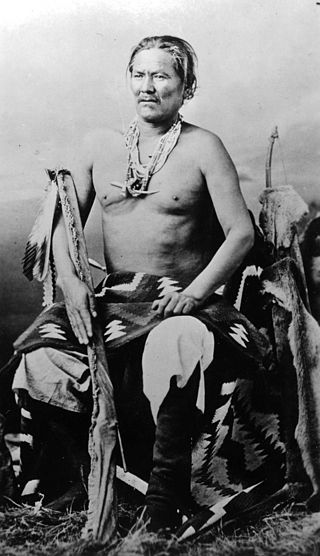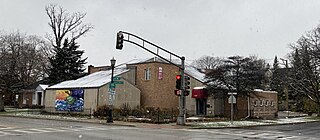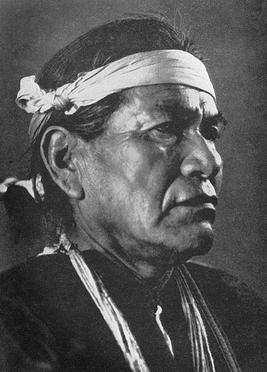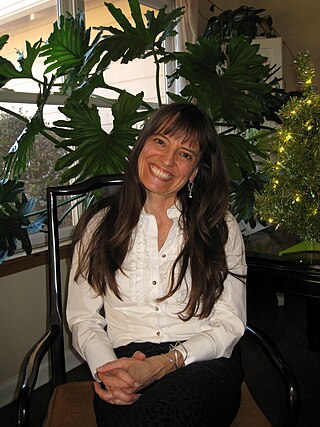
An American Indian reservation is an area of land held and governed by a U.S. federal government-recognized Native American tribal nation, whose government is sovereign, subject to regulations passed by the United States Congress and administered by the United States Bureau of Indian Affairs, and not to the U.S. state government in which it is located. Some of the country's 574 federally recognized tribes govern more than one of the 326 Indian reservations in the United States, while some share reservations, and others have no reservation at all. Historical piecemeal land allocations under the Dawes Act facilitated sales to non–Native Americans, resulting in some reservations becoming severely fragmented, with pieces of tribal and privately held land being treated as separate enclaves. This jumble of private and public real estate creates significant administrative, political, and legal difficulties.

The Navajo are a Native American people of the Southwestern United States.

The Mitchell Museum of the American Indian is a museum in Evanston, Illinois that focuses exclusively on the history, culture and arts of North American native peoples. It is a Core Member of the Chicago Cultural Alliance, a consortium of 25 ethnic museums and cultural centres in Chicago.

Hosteen Klah was a Navajo artist and medicine man. He documented aspects of Navajo religion and related ceremonial practices. As a traditional nádleehi person, he was both a ceremonial singer and master weaver.

Charles Sequevya Loloma was a Hopi Native American artist known for his jewelry. He also worked in pottery, painting and ceramics.

The visual arts of the Indigenous peoples of the Americas encompasses the visual artistic practices of the Indigenous peoples of the Americas from ancient times to the present. These include works from South America and North America, which includes Central America and Greenland. The Siberian Yupiit, who have great cultural overlap with Native Alaskan Yupiit, are also included.
Clyde Merton Warrior (1939–1968) was a Native American activist and leader, orator and one of the founders of the National Indian Youth Council. He participated in the March on Washington and the War on Poverty in the 1960s and was a charismatic speaker on Indian self-determination.
Teri Greeves is a Native American beadwork artist, living in Santa Fe, New Mexico. She is enrolled in the Kiowa Indian Tribe of Oklahoma.
Atsidi Sani was the first known Navajo silversmith.
Walter Richard West Sr., was a painter, sculptor, and educator. He led the Art Department at Bacone College from 1947 to 1970. He later taught at Haskell Institute for several years. West was an enrolled citizen of the Cheyenne and Arapaho Tribes.

Concho is an unincorporated community and census-designated place (CDP) in Apache County, Arizona, United States. Concho is located on Arizona State Route 61, 14 miles (23 km) west of St. Johns. Concho was the original site for the state capital, due to its prosperous farming. As of the 2010 census, the Concho CDP had a population of 38.

Native American jewelry refers to items of personal adornment, whether for personal use, sale or as art; examples of which include necklaces, earrings, bracelets, rings and pins, as well as ketohs, wampum, and labrets, made by one of the Indigenous peoples of the United States. Native American jewelry normally reflects the cultural diversity and history of its makers, but tribal groups have often borrowed and copied designs and methods from other, neighboring tribes or nations with which they had trade, and this practice continues today. Native American tribes continue to develop distinct aesthetics rooted in their personal artistic visions and cultural traditions. Artists may create jewelry for adornment, ceremonies, and display, or for sale or trade. Lois Sherr Dubin writes, "[i]n the absence of written languages, adornment became an important element of Indian communication, conveying many levels of information." Later, jewelry and personal adornment "...signaled resistance to assimilation. It remains a major statement of tribal and individual identity."

Art of the American Southwest is the visual arts of the Southwestern United States. This region encompasses Arizona, New Mexico, and parts of California, Colorado, Nevada, Texas, and Utah. These arts include architecture, ceramics, drawing, filmmaking, painting, photography, sculpture, printmaking, and other media, ranging from the ancient past to the contemporary arts of the present day.
Concho Indian Boarding School was a boarding school for members of the Cheyenne and Arapaho Tribes. It initially served grades 1–6, and later extended classes through grade 8. Admission was later opened to other Native American students.

Heidi BigKnife is a Native American artist living in Oklahoma. She is well known for her unique jewelry, a talent she developed at the Institute of American Indian Art.

Native American fashion is the design and creation of high-fashion clothing and fashion accessories by Native Americans in the United States. This is a part of a larger movement of Indigenous fashion of the Americas.

Sandy Fife Wilson is a Muscogee (Creek) art educator, fashion designer and artist. After graduating from the Institute of American Indian Arts and Northeastern Oklahoma State University, she became an art teacher, first working in the public schools of Dewey, Oklahoma. When Josephine Wapp retired as the textile instructor at the Institute of American Indian Arts, Wilson was hired to teach the design courses. After three years, in 1979, she returned to Oklahoma and taught at Chilocco Indian School until it closed and then worked in the Morris Public School system until her retirement in 2009.

Juanita L. Learned was the first woman to chair the Cheyenne and Arapaho Tribes. She was Southern Arapaho and was known for her work to keep the Concho Indian School from closing, as well as actions to return the school building, and land and buildings of Fort Reno to her tribe.













